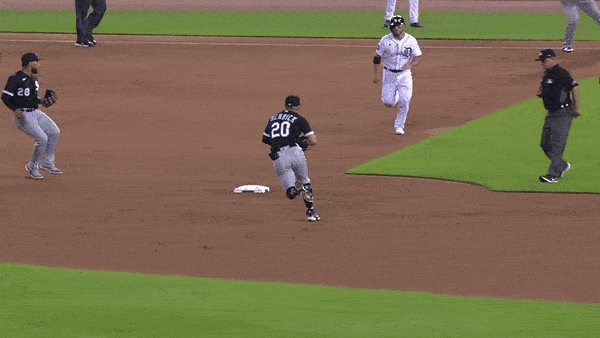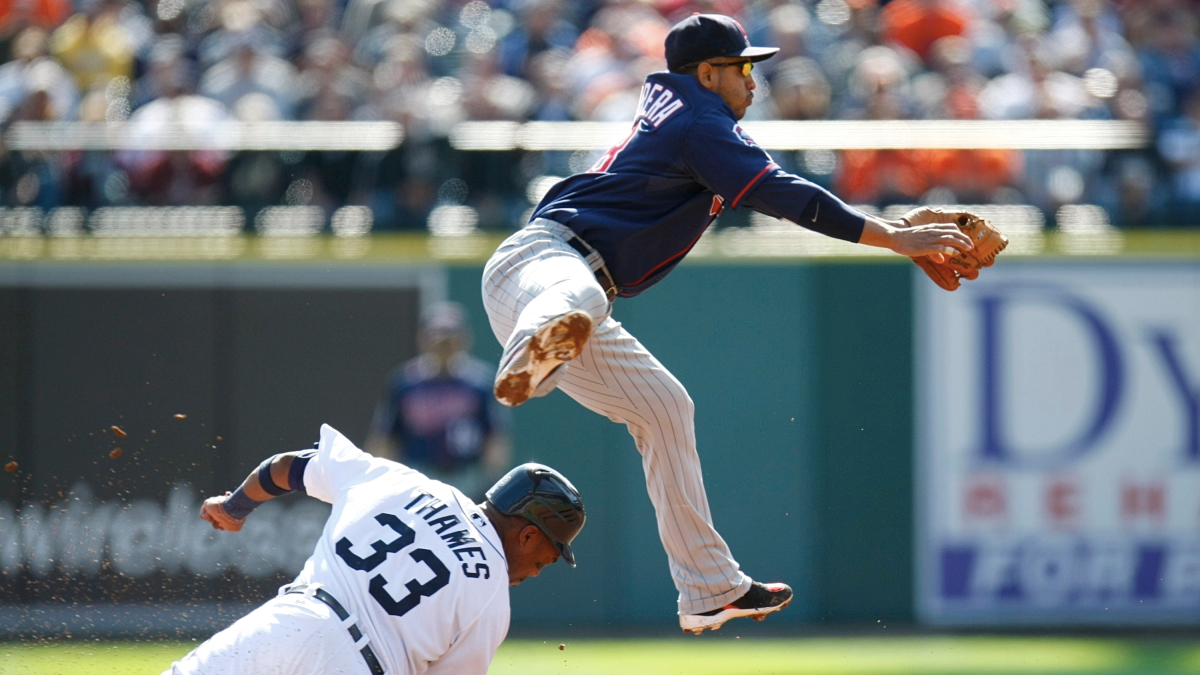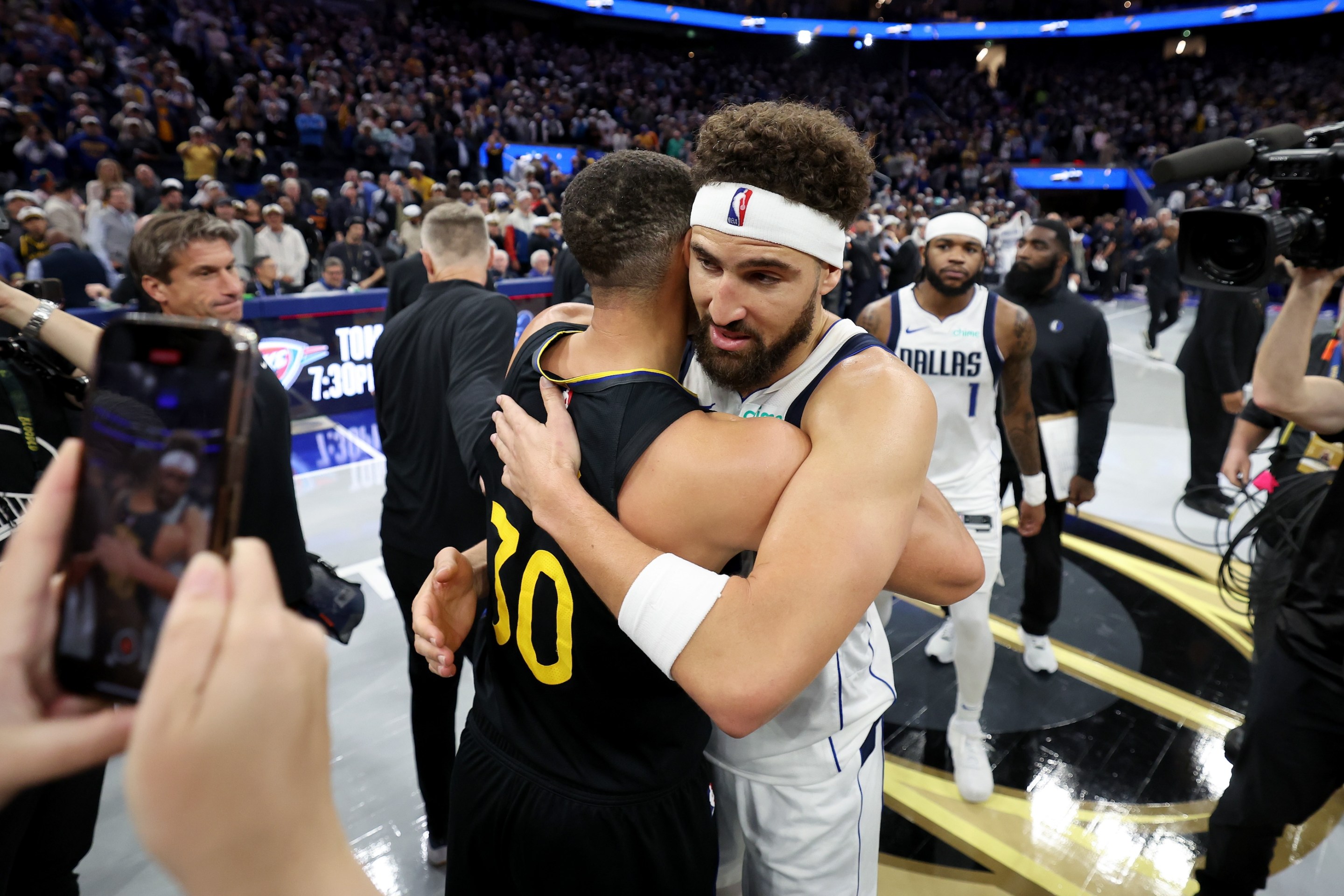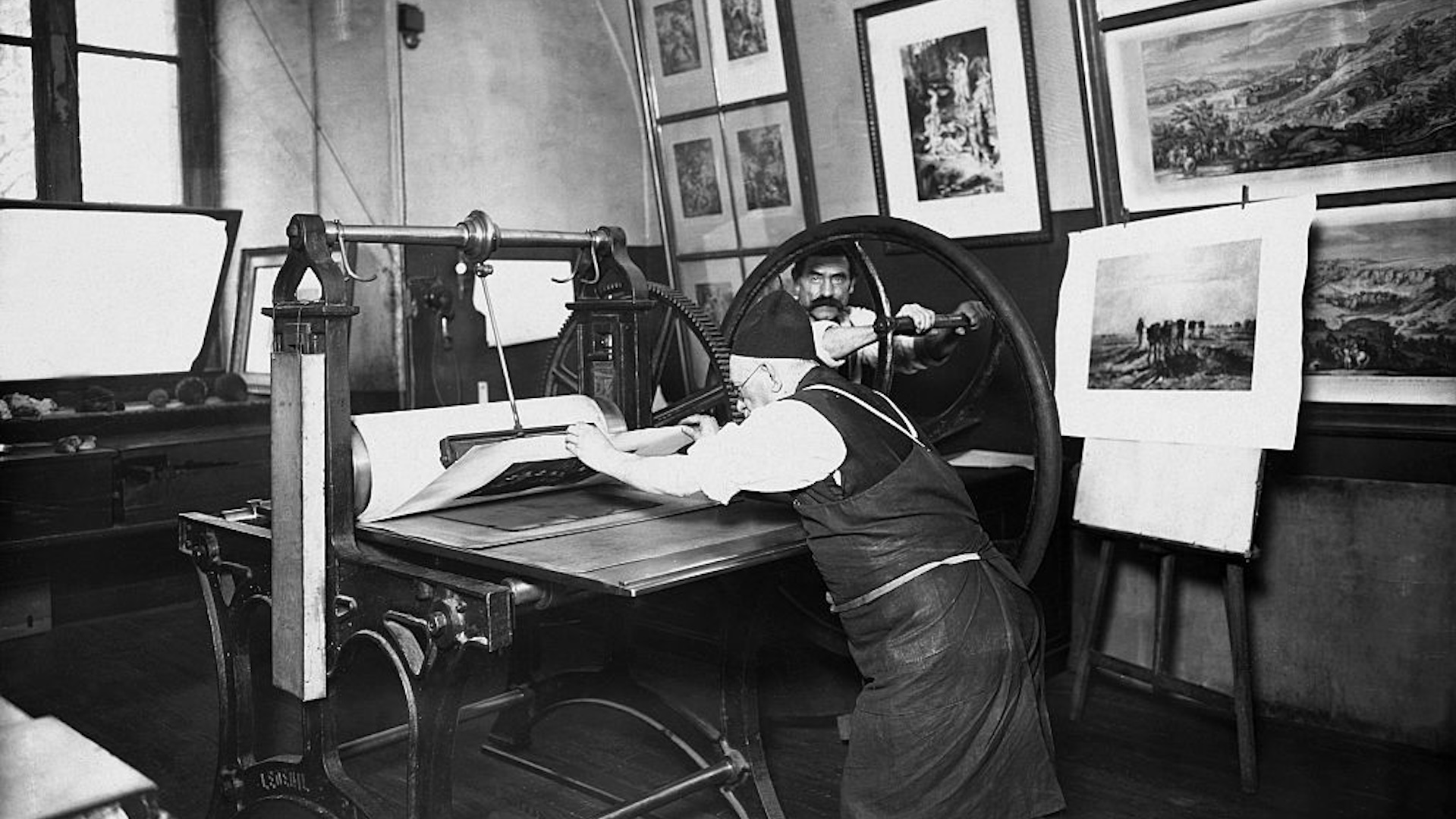For a brief commercial break during Monday night's White Sox-Tigers game, I believed I had stumbled upon my own personal holy grail of sports highlights. It came after a nice subtle hustle play from Tigers catcher Tucker Barnhart, who helped stop a potential inning-ending double play (and eventually allowed the Tigers to score two runs) by staying in the line of a hesitant Danny Mendick's throwing path for as long as possible before going down to make a hard slide. In an era without the old-school takeout slide, this really is the best you can do to interfere with a guy trying to throw to first.

Tigers analyst Kirk Gibson loved this effort, and when play-by-play man Matt Shepard threw to commercial while Tony La Russa made a pitching change, he teased, "You saw how hard Tucker Barnhart went into second. It pales in comparison to years gone by. We'll show you what we mean, when we return."
It turned out that Shepard was referencing a reel of Gibson being a maniac on the basepaths, but I wonder if any other Michigan sports sickos had their minds fly back to July 20, 2006, when Marcus Thames took out White Sox second baseman Tadahito Iguchi to shut down a double play in one of the Tigers' most important wins in a generation.
It almost scared me how quickly I could rattle off memories from this game when it returned to my consciousness last night—some of which I can fact-check and some I can't. I remember watching in my aunt and uncle's living room, after swimming in their pool that day. I remember, though this doesn't show up in any accounts, that the start of the game was slightly delayed for some reason. I remember—this one is verifiable—that after the Thames breakup slide, Chris Shelton—who had started the season ridiculously, shockingly hot but cooled off so much he went down to the minors—drove in the game-winning RBI. And I remember this sweet photo of the slide on the front page of the next day's Free Press sports section. (Something I did not know: Tom Hanks and Ron Howard were part of the sellout crowd!)
I'll admit it's a little weird how clear it all still is, but I'm not exaggerating the importance of this win. Though it was the Twins who ended up taking the AL Central crown and forcing Detroit into the wild card at the close of this season, the White Sox felt like this upstart team's chief rivals during most of the year. It's hard to believe, but they were fresh off a World Series win, with a fearsome roster that included guys like Jermaine Dye, Jim Thome, Paul Konerko, and that day's starting pitcher José Contreras, who had beaten Detroit twice already. The Tigers, meanwhile, had not made the playoffs since 1987 and hadn't even posted a winning record since 1993, but with a combination of splashy free agent signings and strong drafting, this group re-energized the city, introducing me to the concept of a baseball season where you followed your team day by day and genuinely cared about whether they gained or lost ground in the standings.
When the White Sox and Tigers met for this series in July, it was a clash between the two best records in baseball, but Chicago had little-brothered the Tigers by beating them six times out of eight so far in the season. They had split the first two games of this meet-up in Detroit, however, and so this finale presented itself as an opportunity for the Tigers to show they could hang with and outclass the defending champs.
It was tense as hell, and Kenny Rogers deserves a lot of credit for escaping a bases-loaded, one-out situation in the fourth with only one run coming across. But the defining image of that day, and ultimately the entire Tigers-White Sox struggle, is Thames knocking over Iguchi with the score tied at one in the seventh. I think every sports city probably likes to believe that they appreciate the hard-nosed, scrappy, blue-collar, overlooked effort plays more than the others, but badass violence and honorable grit are still undeniably a unique aspect of Motor City sports. The city's three NBA titles came first via the most infamously aggressive team in league history and then later on the back of one of the lowest-scoring superstars of all-time. Its NHL dynasty, also still fairly fresh in 2006, was more memorable for its fights than its goals, particularly the time a vengeful Darren McCarty beat a cowardly Claude Lemieux into submission. And in one of the rare instances in baseball where physical contact between opponents is possible, Marcus Thames was unafraid to carry on that legacy.
"You always want to break up a double play—I learned that in Little League," Thames said afterward. "It's only a dirty play if you can't touch the bag, or you try to get the guy with your spikes."
While Tigers manager Jim Leyland was characteristically gruff about the enormous win ("We gained a game, and it's July 20. That's all it means."), both he and the opposing White Sox manager Ozzie Guillen gave props to Thames in the postgame.
"I want my players to do the same stuff," Guillen said. "I don't want anyone to get hurt, but I applaud him. That's the way to play the game at the big league level."
Of course, that's not the way to play the game anymore. Like the catcher collision in 2014, most versions of the takeout slide were outlawed by MLB ahead of the 2016 season, after Chase Utley broke Ruben Tejada's leg in the previous playoffs. Now, runners can no longer change their path in order to initiate contact, and they can't make anything other than a basic, fundamental slide into the bag. Essentially, if you're going to take an infielder out as a baserunner today, you have to make it look like an accident, meaning there's no room anymore for the kind of emphatic-but-legal play that Thames made to win the game 16 years ago.
But this is a lost play for another reason, too. You may have noticed already, as I've described the action, that I don't actually have any video to show you. That's because I've never been able to find it. The picture in my mind does, thankfully, exist in the real world, but because this game took place just before YouTube and long before Twitter became ubiquitous, there doesn't appear to be any video evidence remaining. I have searched for it in the past and came up fruitless, and between that last try and today nobody seems to have filled the gap. I've trawled through YouTube compilations of takeout slides, channels that have full retro games, MLB's Film Room, Twitter accounts that post old baseball highlights, and pages of search engine results, and I've never found anything more evocative than a standard newspaper gamer. There's no apparent way for me to see that slide again. There's no way I can share it with you in a way that fully captures the impact of watching it happen for the first time. But I guess it lives on just the same.





